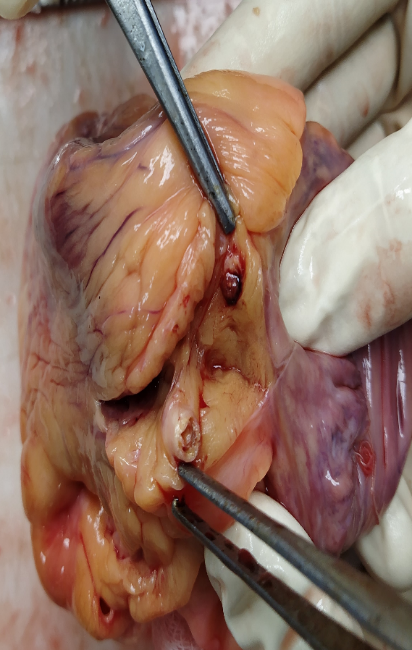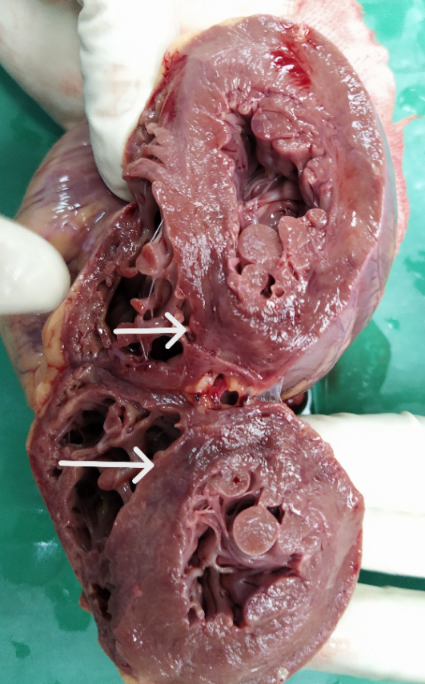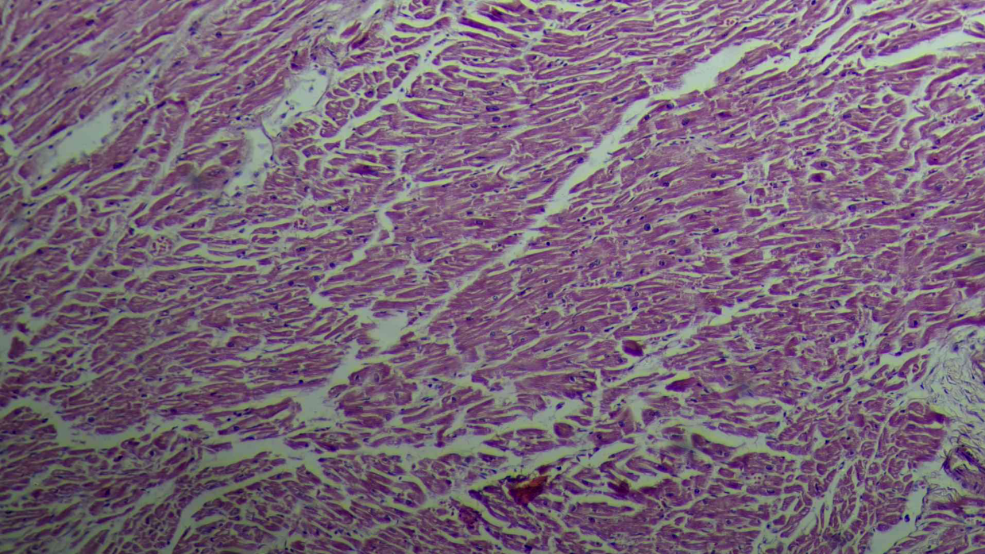Introduction
The word custody is derived from the Latin word “custos odis” which means guardian. Custodial deaths are defined as deaths that happen while a person is under the control of law enforcement and include prisoners dying in hospitals as well as deaths that happen during processing, apprehension, imprisonment, lockup or jails, during questioning, or deliberate carelessness on the part of the investigating agency.1 Deaths occurring during police custody always raise public apprehension because they reflect the human rights standing of the country. According to the National Human Rights Commission (NHRC) guidelines of India, every death that occurs while a person is in custody must be investigated by a magistrate, and the entire autopsy procedure must be videotaped.2, 3, 4 In most cases, the manner of such deaths is considered unnatural but on the contrary, the majority turned out to be natural. The cardiovascular system constitutes the major contributor to death in natural causes.5, 6 The World Health Organization (WHO) defines sudden death as “death within 24 hours from the onset of the symptoms”.7 Sudden Cardiac Death (SCD) is the term used to describe an unexpected, unanticipated cardiac pathology-related death that happens suddenly and without any noticeable signs. It can also cause deaths in person without any underlying fatal pathology that occurs within one hour of the onset of symptoms.8 Sudden cardiac deaths contribute to about 60% of all sudden deaths. Coronary artery disease is the most common cause of all sudden cardiac deaths. In many cases, sudden cardiac death becomes the first presenting manifestation of underlying ischemic or coronary artery disease. In around 1 in every 20 cases of sudden cardiac deaths, no definite cause was found, even after an extensive autopsy by a forensic pathologist.7 This case illustrates one such instance in which a prisoner's death raised questions about the cause and manner of death, which were then resolved based on the results of the autopsy.
Case Presentation
A forty-two-year-old male prisoner was brought to the casualty with symptoms of sudden onset of giddiness and breathlessness. On examination at the casualty, he was unconscious with an unrecordable pulse and blood pressure. Despite resuscitation, he was declared brought dead in the casualty. He has been a known case of type 2 diabetes mellitus for the past five years and was on treatment with insulin. He was non-compliant to the treatment and not taking medications properly.
Autopsy findings
We performed a medico-legal autopsy under Magistrate inquest. Autopsy was conducted by a panel of doctors as per NHRC guidelines of India and the entire autopsy was videotaped. The deceased was a moderately built male of body length (172 cm) and weight (65 kg). On external examination, bluish discoloration was noted on the fingernail beds, indicating cyanosis. There were no other significant findings apart from the postmortem changes consistent to the time of death; and no evidence or signs of violence. On internal examination, significant findings were limited to the cardiovascular system. The heart weighed 225 grams; the right coronary artery showed 100% occlusion 2 cm from its origin (Figure 1), left anterior descending, and left circumflex artery showed 80% and 70% occlusion respectively. The walls of the coronaries, and aorta showed deposition of calcified and ulcerated atheromatous plaques (Grade VI atherosclerosis). The thickness of the free wall of the left ventricle was 1.9 cm and the right ventricle was 0.7 cm. The left ventricle showed evidence of acute myocardial infarction (AMI) as demonstrated by the focal hemorrhagic and soft myocardium. (Figure 2) All other internal organs were congested and unremarkable.
Postmortem biochemistry revealed total creatine kinase (CK Total) of 19602 IU/L and creatine kinase-myoglobin binding (CK MB) of 832 IU/L. The ratio between total and MB isoenzyme of creatine kinase was found significant. The Viscera were preserved for chemical analysis for toxicological analysis which turned out negative and tissues were sent for histopathological examination. Histopathology showed alveolar edema and emphysematous changes in the lungs. The abdominal aorta, thoracic aorta coronary arteries showed evidence of atherosclerosis by deposition of calcified fibroatheromatous plaques and multiple vessels showed critical narrowing. Focal areas of left ventricle myocardiocytes showed loss of nuclei with hypereosiniphilic cytoplasm. The stroma shows edema and hemorrhage (Figure 3). Section from the posterior interventricular artery showed recanalised thrombus. The final opinion to the cause of death was acute myocardial infarction (Sudden natural death).
Discussion
Death in custody is always terrible and seen as particularly distressing by the bereaved, the concerned authorities, and any inmates. These fatalities can occasionally create issues with law and order. The majority of deaths occur during police custody either during detention or in prison were due to natural causes of death as in our case.9, 10, 11, 12, 13, 14, 15, 16, 17 Our case is similar to a study by Kuchewar et al. where Myocardial infarction and ischemic heart disease comprise the major cause of death in natural causes under police custody. Most of the cases in the study who died of cardiovascular illness were brought dead to the tertiary care center when compared to respiratory or other causes. Most fatalities of natural deaths in police custody or during police action either died within 12 hours of being hospitalized or were unable to reach a tertiary care facility in time. This is in concordance with our case.9, 14, 16 A study by Dutta et al. showed 4 cases of natural deaths are due to myocardial infarction which is similar to our case.14 The police have the authority to decide whether to seek medical advice for a detainee in a police station. In some cases, it's possible that the police were ignorant of the victim's illness or that they never asked. Furthermore, they probably overlooked any physical early warning signs that arose during their police detention and questioning since they thought it would be easier to evade them and avoid being taken into custody or going to court.9, 11, 12, 13
Modi et al. studied 150 cases of sudden death where the cause of death in 77 cases was due to myocardial infarction with atherosclerotic changes in which 75% of cases are between 35 to 45 years of age with male preponderance corresponding to our case.7 Razuin et al. demonstrated a case of sudden cardiac death of a young with the presentation of acute myocardial infarction with hemorrhagic myocardium similar to our case presented.18 In a study by Quayyum et al. a total of 71(63.4%) custodial deaths were reported due to natural causes. Out of these, a maximum of 29.4% of cases were due to sudden cardiac death (myocardial infarction).19 The most common cardiovascular cause of sudden death is coronary atherosclerosis and it is the evident cause of sudden death in 75% of cases. Examination of atheromatous plaque frequency and severity should be assessed and demonstrated as 75% of occlusion in any vessel is critical and might be the cause for the fatality. The presence of any thrombi, inflammation, or scar tissue should also be evaluated.20 A four-year autopsy study of sudden cardiac deaths showed coronary artery disease (56.6%) contributes to the major causes and the maximum number of deaths (38.2%) occurred within six hours of the onset of symptoms as in our case.21 A review of Association for European Cardiovascular Pathology (AECVP) guidelines for diagnosis of myocardial infarction at autopsy states that more than 70-75% of stenosis in coronaries are high grade and critical to end in fatality.22 In our case, all three major coronaries showed critical stenosis which could explain the fatal course of sudden death presented here.
Conclusion
This case illustrates the most common cause of a natural death that occurs in a police custody or prison. We have ruled out all the possible injuries and their sequel both externally and internally with the major findings towards the coronary pathology establishing the cause of death in this case. Meticulous autopsy and ancillary investigations are important in finding the cause and manner of death.



